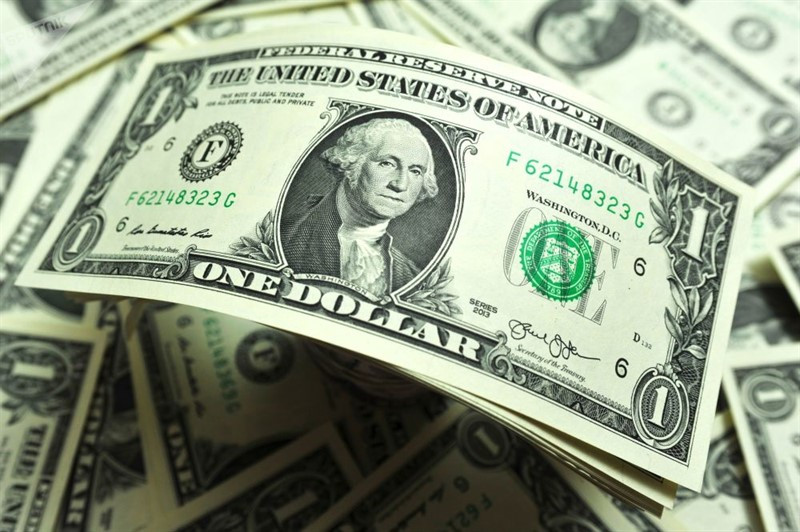
The US inflation data raised fears that the Fed would be forced to taper QE program at a faster pace and raise interest rates earlier than planned the day before.
Against this backdrop, the greenback strengthened sharply against its main competitors, pushing EUR/USD to its lowest levels since July 2020.
According to the US Department of Labour, the country's consumer price index rose 6.2% in October, reaching its highest level since November 1990. Core inflation, which excludes volatile energy and food prices, accelerated to 4.6%, also breaking a 30-year high.
Investors are keeping a close eye on inflation data in the United States as it is key to the Fed's decisions on the future direction of monetary policy.
Following last week's meeting of the US central bank, Jerome Powell said that the current dynamics of consumer prices in the United States did not correspond to the concept of price stability. However, he remains confident that the increase in inflation is caused by factors related to the COVID-19 pandemic and is temporary.
"The markets are still conferring credibility on the Fed to an extent, that they will not allow very high inflation to continue indefinitely," National Australia Bank strategy said.
Even if other central banks are eyeing similar moves, a dollar index move above 95 might prompt investors to get out of the way of a rising greenback, he added.
"It's a pretty big level technically and if we can break through it there will be more people throwing in the towel," National Australia Bank said.
The rise in prices has not only hit those sectors of the US economy that have been most affected by the national lockdown. Experts predict an even bigger jump in domestic inflation in the coming months because key factors such as hot housing markets and the global energy crisis are not going away for the foreseeable future.
Quadratic Capital Management analysts say that if inflation does not begin to ease, the Fed may have to accelerate the pace of its asset-buying program tapering and move to a rate hike.
"The US forward curve started to reflect a rising probability of a first rate hike by the Fed between June and September 2022," UniCredit analysts said.
Traders' expectations of a rate hike will rise and this will provide support for the greenback, strategists at Commonwealth Bank of Australia believe.
Higher inflation in the United States is more likely to be sustained than temporary, they said, as Americans' long-term inflation expectations have increased significantly and the pace of wage growth has accelerated.

A sixth consecutive annual CPI reading above 5% has enabled the USD index to cross the important 94.50 level. Hence, growth is possible without significant resistance to 96.00, experts at Westpac say.
According to Deutsche Bank, further growth of the dollar is likely to depend on cues about Fed policy and whether a jump in inflation, which has also triggered a fall in global stock indices, will have a greater impact on market sentiment.
"On the dollar we have the classic dilemma – if the Fed won't respond to high inflation it's the dollar negative; if the Fed tightens up it's the USD positive. Right now, the dollar is largely stuck between these two worlds," they noted.
The US economic calendar is empty today due to the country's Veterans Day celebrations. Market participants are still under the impression of the US inflation statistics published the day before.
The USD index continues to digest Wednesday's sharp advance and moves to fresh tops around the 95.00 area, where some initial resistance seems to have turned up for the time being. A break above would open the way to 95.70 and then to 97.80.
The greenback is expected to remain positive as long as it trades above the 200-day moving average, which is now near 92.10.
HSBC analysts say that the Fed may not withdraw accommodative policy sooner than expected, but it is on its way to doing so. This should be enough to support the dollar against a number of currencies for which the central bank's guidance is much more dovish, or for countries where yields are lower than in the US.
Deutsche Bank considers that the Fed's "hawkish" attitude leaves little room for the USD to fall. In Europe, however, there is a massive decline in real yields amid a stubbornly dovish ECB sentiment. The data on capital inflows into Europe is also disappointing. Therefore, they see downside risks for EUR/USD.
The euro fell almost 1% against the dollar after data showed US consumer prices rose last month at their fastest pace since 1990 and traders felt the US central bank could respond by raising interest rates faster than its European counterpart.
"Inflationary pressures are piling up on our models, why we expect the Fed to hike three times in 2022 and 2023, respectively, and the ECB once in 2023. The USD is likely to outperform peers," Nordea strategists believe.
Commerzbank experts says that the EUR/USD pair has made a new low for the year and will continue to remain under bearish pressure while trading below the five-month downtrend at 1.1660.
"For now, attention is on the previous downtrend (from 2008) which is now located at 1.1366 and should act as support, we look for this to hold. Below 1.1366 would target 1.1290 then 1.10, the 61.8% and 78.6% retracement of the move seen in 2020, " they added.
The material has been provided by InstaForex Company - www.instaforex.com